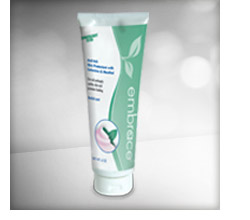Winter can cause even the most buoyant spirits to sink. It's cold outside, the sun disappears earlier and many people find themselves staring at the same four walls day in and day out. It's a dreary situation indeed – but for many people, perhaps including your residents, it's far more serious than a case of the winter blues. Seasonal affective disorder, or SAD, occurs repeatedly at the same time of year, typically beginning in the fall and ending in spring. Although rare, some people experience the opposite – they become depressed when spring or summer roll around.
Causes
Despite extensive research, the exact causes of SAD are unknown. According to the Mayo Clinic, it's likely that, as with many other mental health conditions, genetics, age and a person's natural chemical makeup play a role in developing the disorder. Being female, living far from the equator and having a family history of SAD are also risk factors for developing the condition.1
Other causes are thought to include1:
- Melatonin levels. Melatonin, a natural hormone, plays a role in sleep patterns and moods. When the seasons change, the melatonin balance can be disrupted.
- Circadian rhythm. Fall and winter bring with them a reduced amount of sunlight. This can upset the body's circadian rhythm, or internal clock, which tells a person when they should be awake or sleeping. This disruption can lead to depression.
- Serotonin levels. Serotonin is a brain chemical (neurotransmitter) that affects mood. Reduced sunlight can cause serotonin levels to drop, leading to depression.
Symptoms
SAD is a cyclic condition, which means that symptoms come back and go away at the same time every year. Symptoms include1:
- Depression
- Hopelessness
- Anxiety
- Loss of energy
- Social withdrawal
- Oversleeping
- Loss of interest in activities
- Changes in appetite (especially a craving for high-carbohydrate foods)
Symptoms might start out mild and grow worse as the season progresses. If left untreated, SAD can lead to suicidal thoughts or behavior, social withdrawal and substance abuse.1
Diagnosis
In order to receive a diagnosis of SAD, individuals need to have experienced depression and other symptoms for at least two consecutive years, and during the same season each year. Those periods of depression also need to have been followed stretches of time without depression. Finally, there must be no other explanations for the change in mood or behavior.1
Treatment
There are a number of available treatments for residents who are experiencing SAD. Common treatments for SAD include phototherapy (also known as light therapy), psychotherapy and medication.1
During light therapy, the affected person sits several feet away from a specialized box designed to expose users to bright, outdoor-like light. Light therapy has few side effects, is easy to use and appears to cause a change in the brain chemicals linked to mood.1 For light therapy to be effective, SAD sufferers should be exposed to a 10,000-lux (about the intensity of the sun at dawn) light source for 30 to 45 minutes a day.2
Even though SAD is thought to be related to biochemical processes, mood and behavior can also complicate symptoms of the disorder. Psychotherapy can be beneficial for identifying and changing negative thoughts and behaviors as well as learning healthy ways to cope with SAD and manage associated stress.1
Finally, a doctor might choose to treat someone with SAD with antidepressants such as bupropion (Wellbutrin XL), paroxetine (Paxil), sertraline (Zoloft), fluoxetine (Prozac and Sarafem) and venlafaxine (Effexor).1
Altering your facility's environment to combat SAD
While severe SAD might require treatment with medication, there are a number of ways to make your facility a more welcoming place for those suffering from the disorder. For starters, try opening blinds, pulling back curtains and trimming any tree branches that block sunlight from entering the facility. Sunshine appears to boost mood, so encourage residents to sit in sunny rooms. Exposure to outdoor light is also highly beneficial, even if just for short periods of time.
Physical exercise can also relieve stress and anxiety. Make sure that there are abundant opportunities to get up and move around your facility, even if it's just taking a few laps up and down the hallways.
While SAD can hit residents hard, simple adjustments to the environment, combined with other treatment options, can help ease the depression and anxiety associated with this disorder.
References
1 MayoClinic.com. Seasonal affective disorder (SAD). Available at: http://www.mayoclinic.com/health/seasonalaffective-disorder/DS00195. Accessed February 26, 2014.
2 The Harvard Medical School Family Health Guide. A SAD story: seasonal affective disorder. Available at: http://www.health.harvard.edu/fhg/updates/Seasonal-affective-disorder.shtml. Accessed February 26, 2014.








 Since 1968, Professional Medical has been a dedicated supplier to the long-term care industry. Our education, resources and products are designed to make improving care easier!
Since 1968, Professional Medical has been a dedicated supplier to the long-term care industry. Our education, resources and products are designed to make improving care easier!



